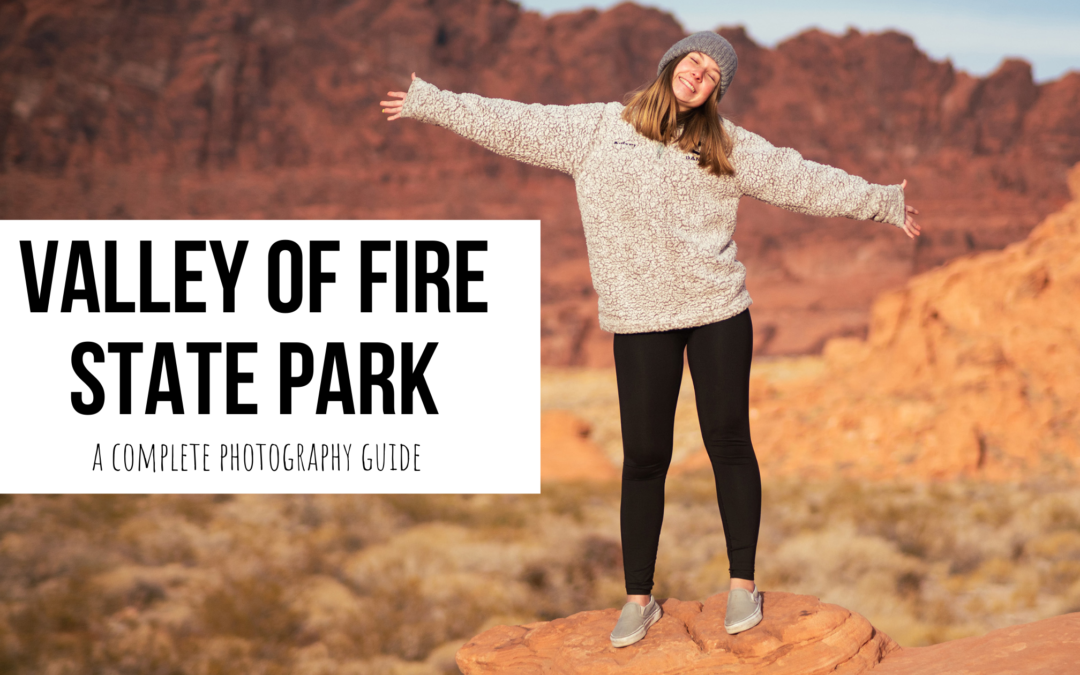Valley of Fire State Park, located about an hour and a half from Las Vegas, is a great place to explore for a day or even a week. With vibrant red and orange rocks and crazy textures with a big desert vibe, this place can be an awesome spot for photographers.
It is great for portrait or landscape photographers alike!
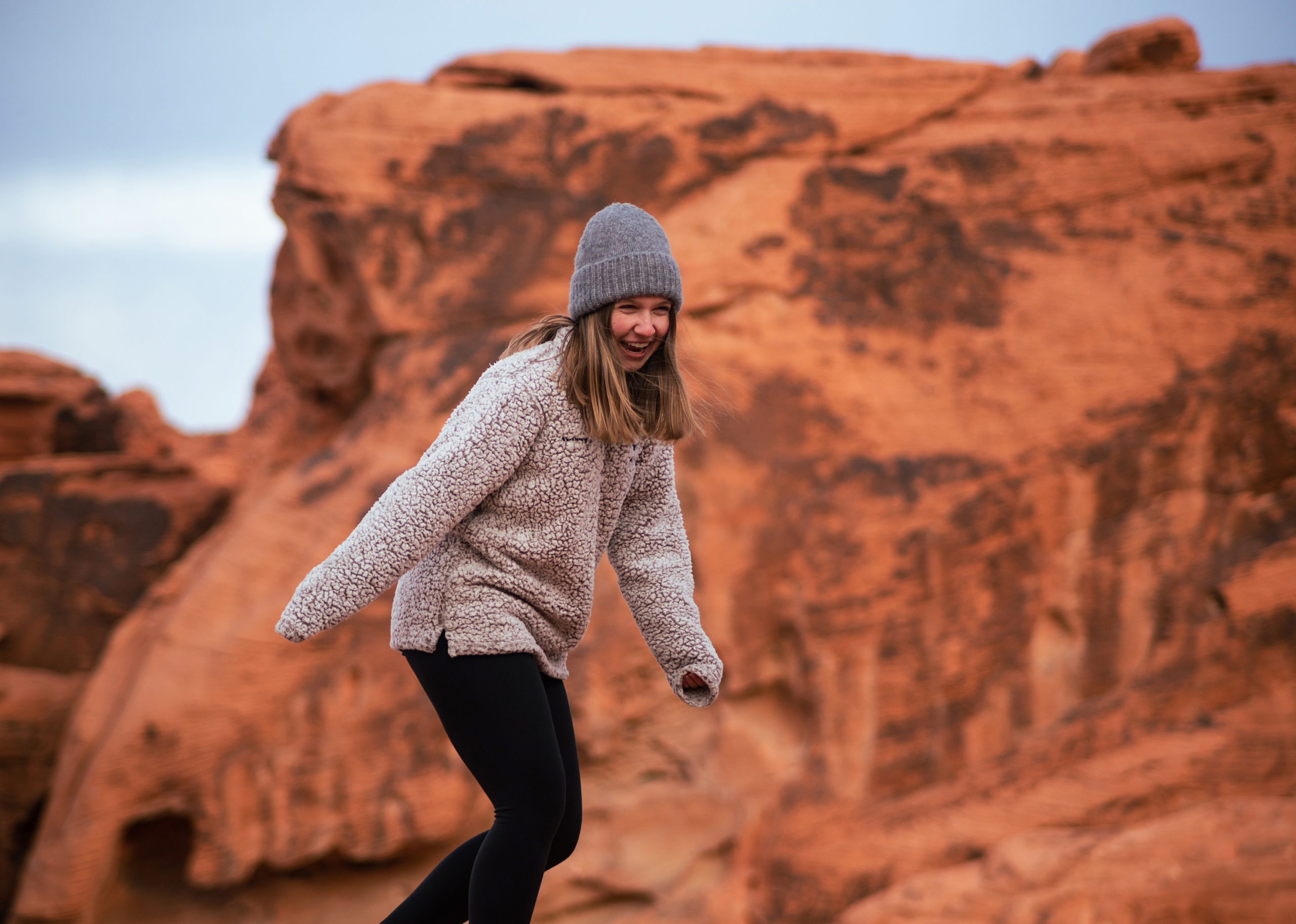
I headed up there for the day a few weeks ago with my girlfriend, and it will definitely be a place I return to in the near future!
I only got to experience part of the park, but the spots I did visit were breathtaking, to say the least.
So, here are some of my favorite spots at Valley of Fire State Park, with some helpful tips sprinkled in as well!
Directions
Valley of Fire is located approximately 58 miles from the Las Vegas Strip in the Mojave Desert. The elevation of the park is between 2,000 and 2,600 feet.
From the Las Vegas Strip:
- Take 1-15 North for 35-40 miles
- Take Exit 75 and head East toward Valley of Fire/Lake Mead
- From there, drive about 17 miles on Valley of Fire until you reach the West Entrance Station
The entrance to Lake Mead is about 20 minutes away from the East Entrance of Valley of Fire, so you can visit both places if you so choose.
Entrance into Valley of Fire is $10.
Fire Wave
Fire Wave is a great place to get creative with your shots.
From the West Entrance:
- Drive 3.5 miles and turn left, following a sign for the visitor center and Mouse’s Tank
- Curve left to stay on White Domes Road and drive 3.7 miles to Parking Lot #3
There you will see 2 parking lots, one on the left and one on the right. The trailhead for the fire wave starts on the right parking lot.
Trailhead address: White Domes Road (Mouse’s Tank Road), Valley of Fire State Park, Overton, NV 89040
Trailhead coordinates: 36.4882, -114.52875 (36° 29′ 17.51″N 114° 31′ 43.50″W)
Information about the hike:
- Easy, moderate hike
- Takes about 15-30min one way
- 1.5-mile hike roundtrip
- Part of the hike is sand
You’ll notice the fire wave right away as it gives the appearance of a big bacon strip because of its red and white stripes.
When we got there, we waited our turn and then climbed up to the top and took some pictures.
For this location, my mind instantly was focused on the textures and leading lines of the composition. If you want to learn more about compositional techniques, read my blog article here.
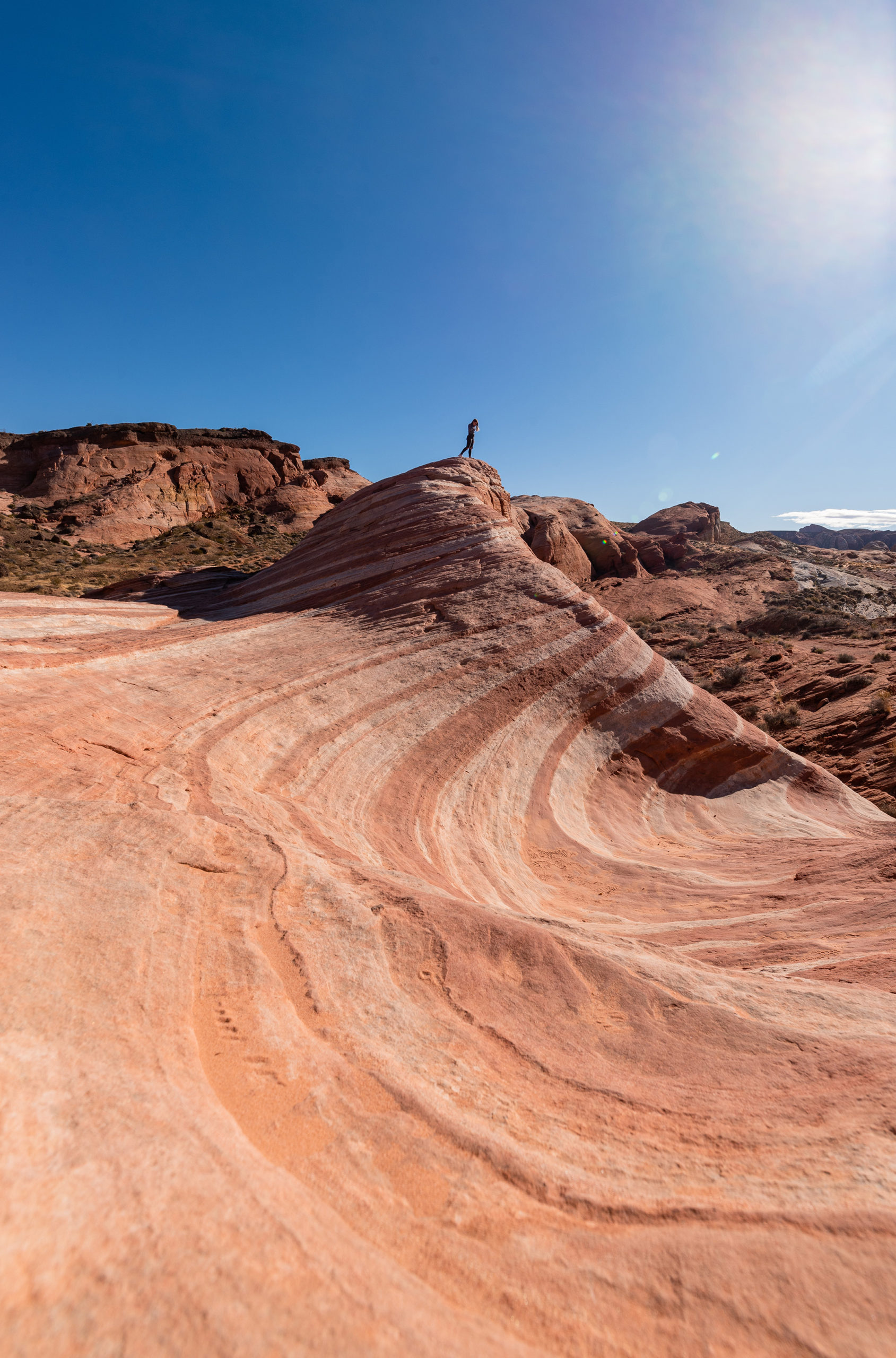
Taken at 15mm.
I got down low (either squatting or laying on my stomach), with a wide-angle lens, and snapped some photos.
A wide-angle lens is great for this spot because it makes it appear bigger than it actually is. Plus it makes the stripes and the whole scene a bit more dramatic, making for some nice pictures.
The best time to shoot at fire wave is during the golden hour (around sunset or sunrise). If this is your plan, I recommend arriving early so you can map out your composition.
The Classic Road Shot
If you have ever looked up “Valley of Fire State Park” or even “Nevada,” you probably have seen this very famous road.
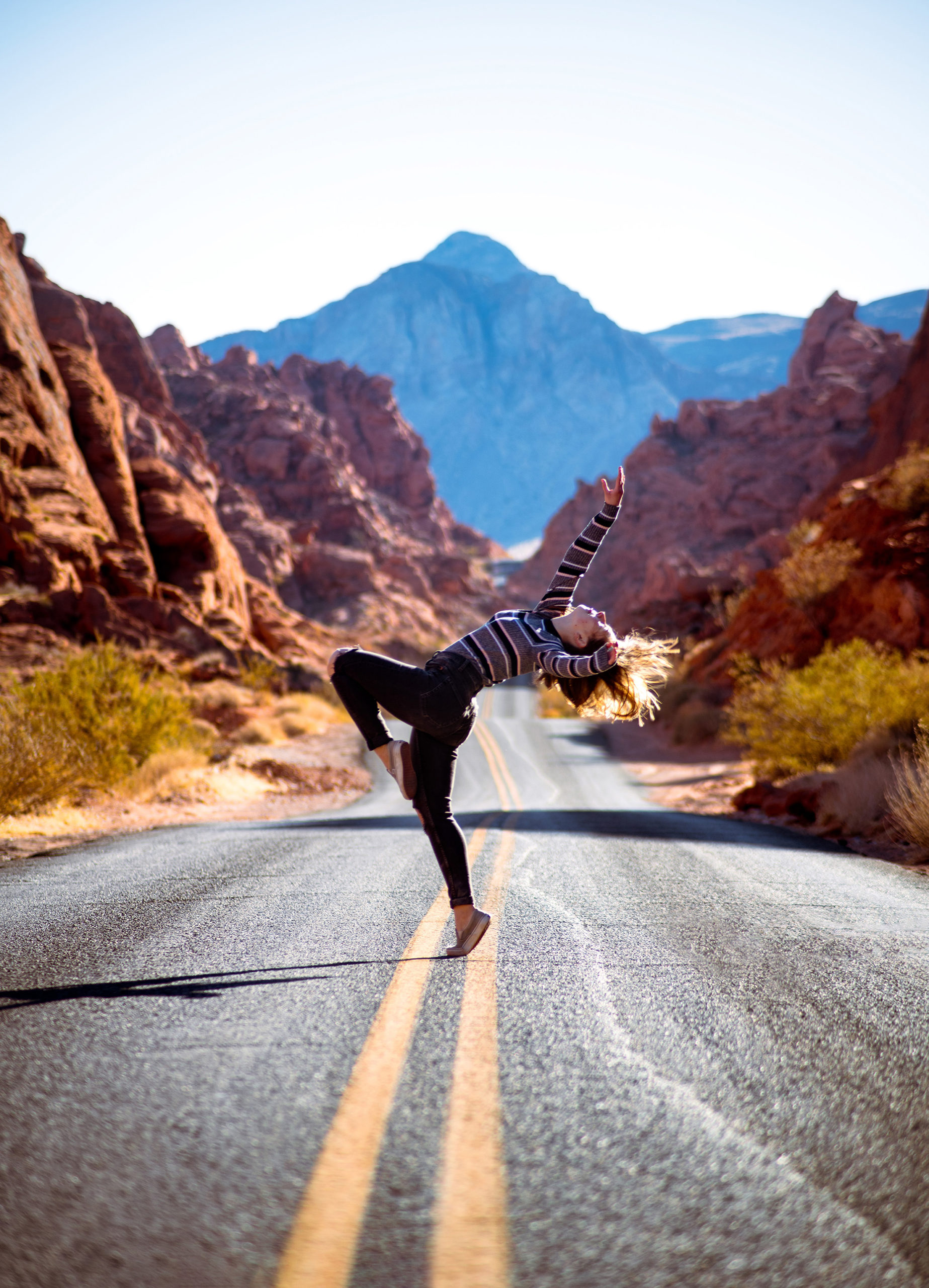
This was shot at 70mm, compressing the background and making the mountain appear larger and closer than it actually was.
It is a very popular and classic shot when you are in the park, probably because of the leading lines element, as well as the mountain that is centered perfectly in the background.
From West Entrance:
- Drive 3.5 miles and turn left, following a sign for the visitor center and Mouse’s Tank
- Curve left to stay on White Domes Road
- Drive about 0.5 miles into Rainbow Vista Trailhead.
- From there, just turn around and you’ll see the classic view!
From Fire Wave:
- Drive back toward Rainbow Vista Trailhead (about 2.9 miles)
- Going this direction you’ll be able to pull off on the 2 pullout spots on the right or park at Rainbow Vista Trailhead
From the 2 small pullouts, you can either take shots directly from the road (while safely watching for passing cars of course) or climb up some rocks to get a higher vantage point.

This spot can be extremely popular during sunset or sunrise because of the nice golden light that hits the rocks. And also because sunsets and sunrises in Nevada can be pretty legendary.
As for photography tips, if you have a subject in the frame, I recommend shooting with a telephoto lens (around 70-200mm). This will allow for the image to become compressed, making the background appear closer and larger.
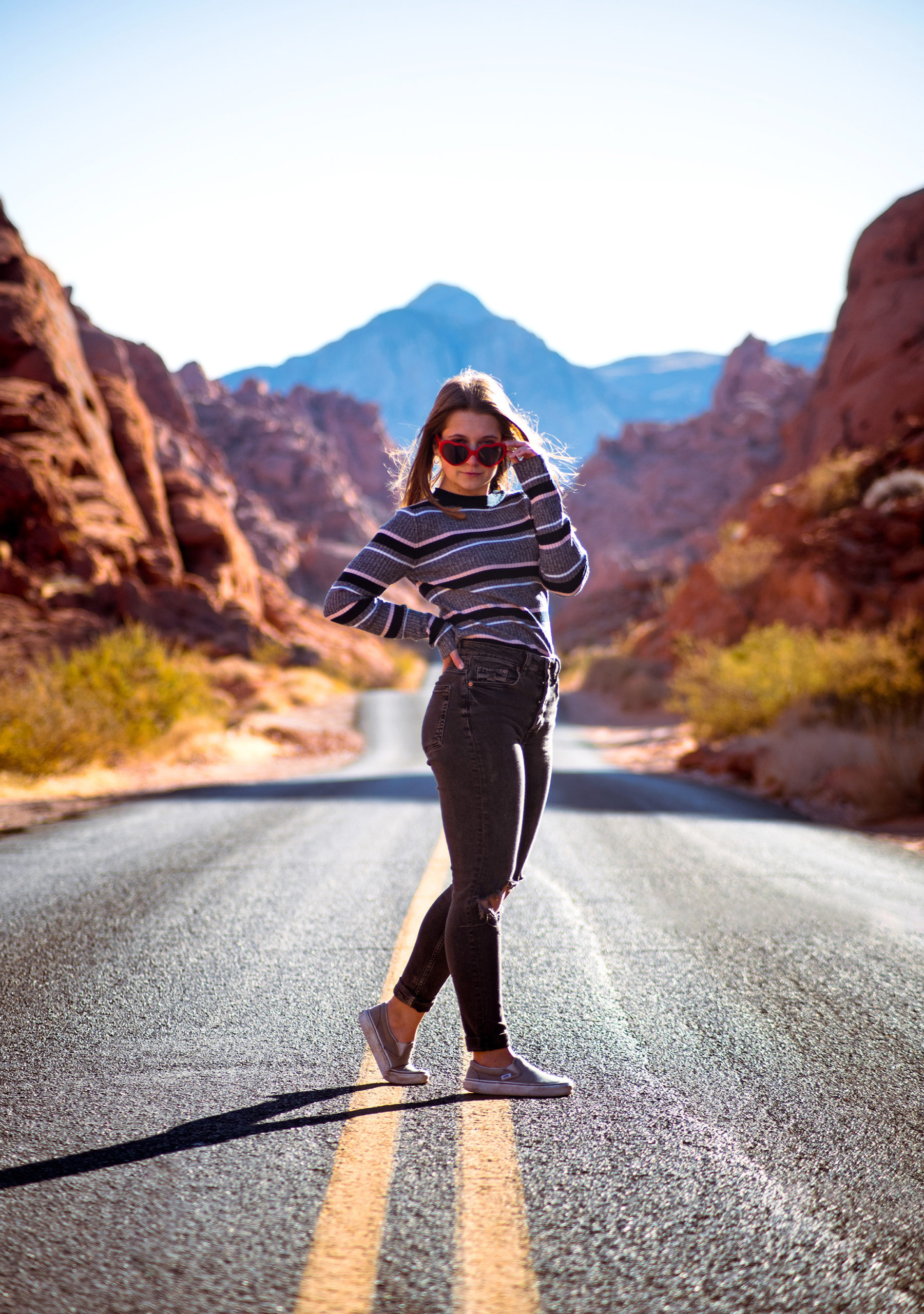
Shot at 70mm.
This technique works great with any road shots where there is a mountain or large element in the background.
Elephant Rock
Now, we didn’t even end up hiking to this rock mainly because we were more focused on the fire wave and road shot. We did see where the trailhead is, which is right next to the East entrance of the park.
There is NO parking allowed on the side of the road, so you have to park at the entrance parking lot.
The hike is 0.3 miles and features a rock that, you guessed it, resembles an elephant.
This spot is probably 2nd most popular in the park, so be prepared for some crowds.
When the Park Closes
My biggest tip I can give you is that Valley of Fire State Park CLOSES at sunset and opens at sunrise. We did not know this (I should’ve done my research beforehand) and we’re kicked out of the park about 10 minutes after sunset.
The only way around this is if you camp in the park. There are 2 campgrounds that are first come first serve.
To my knowledge, even if you camp in the park, you cannot drive around and take night photos wherever you want.

This is a composite image! The foreground was shot during the day and the meteor shower was captured in a different location outside of the park.
So if you see any night photos of the park online, they’re either a composite or the photographers somehow got special permission.
Where to Stay
Like I mentioned above, there are 2 campgrounds located in the park, Atlatl Rock Campground, and Arch Rock Campground. Combined there are 72 sites available.
They are first come first serve and cost $20/night + $10 for sites with hookups.
As for alternatives to camping, the nearest motel is the North Shore Inn at Lake Mead and has good reviews. It is about 10 miles from the park and you can find out more information about it here.
Weather
The weather at Valley of Fire mimics desert weather, so expect hot temperatures in the summer and cold temperatures during the winter.
During the summer months, Valley of Fire temperatures can range from 80-100+ °F (26-38+ °C). So if you are visiting during June – August, make sure to bring PLENTY of water and stay in the shade as much as possible!
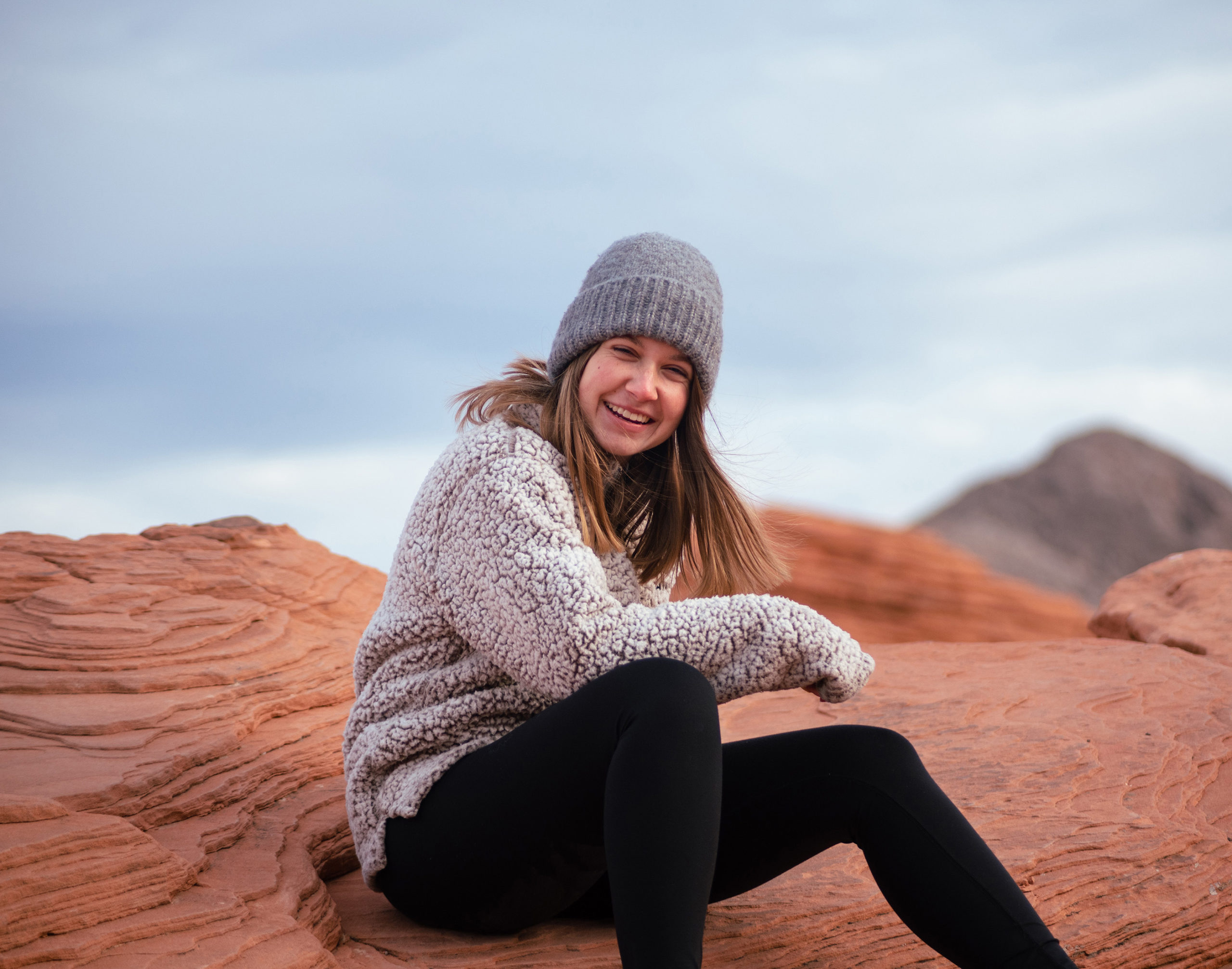
If you plan on going during the winter months, as I did, temperatures range from 32-60 °F (0-15+ °C). So if you are thinking of camping there during winter, make sure to bring lots of warm clothes.
There you have it! A complete photography guide to Valley of Fire State Park. Hope you enjoy this awesome state park! Have fun and keep photographing!

